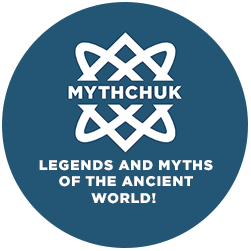Veles — Slavic God of Cattle, Underworld, Magic and Cosmic Balance
- Main
- >
- Slavic Mythology
- >
- Slavic Pantheons of the Gods
- >
- Veles
Could a god of livestock and the underworld defeat the heavenly thunder-wielder? You’ll find out near the end.
Veles (also called Volos) is one of the central deities in the Slavic pagan pantheon. He was revered as the protector of cattle, abundance, magic, music, the dead, and oaths. Chronicles mention him alongside Perun, and it was to them that Slavs swore sacred oaths. The figure of Veles is multifaceted, profound, and complex—much like nature itself.
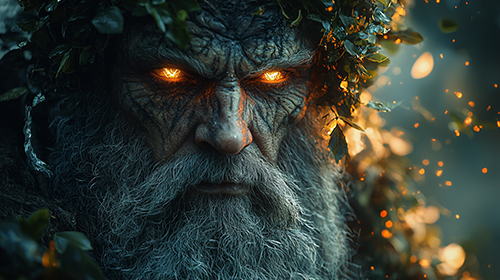 Veles
VelesOrigins and Identity
There are almost no written records about Veles’s birth. However, later myth reconstructions suggest he is one of the most ancient gods, an embodiment of the underworld, sometimes considered a son or aspect of Rod, the primal source of the universe. Veles is often associated with bears, bulls, or wolves—symbols of strength and wild nature. He is the god of transitions: between day and night, life and death, the visible and the hidden.
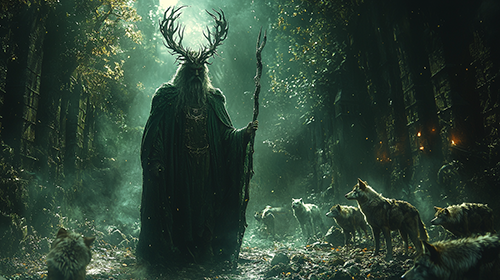 Origins
OriginsVeles and Perun — A Cosmic Duality
The most famous mythological motif is the eternal struggle between Veles and Perun. Perun is the god of lightning, sky, and war, while Veles rules over earth, waters, cattle, and shadows. In seasonal myths, Veles annually ascends from Nav (the underworld), steals cattle or fertility, and Perun chases him with lightning—driving him out. This myth reflects the yearly cycle: winter (Veles’s domain, when nature “dies”) and summer (Perun’s reign, when fertility and light triumph). Their conflict isn’t a battle of good versus evil, but rather a balance of forces: Veles births life through darkness, Perun through action.
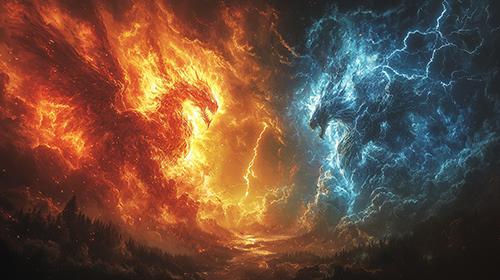 Veles and Perun
Veles and PerunGod of Magic, Wisdom, and Art
Veles was the patron of volkhvy (pagan priests), healers, and poets. Folk memory portrays him as a teacher of wisdom, wielder of magic, and keeper of arcane knowledge. Unlike Perun’s overt authority, Veles’s power is internal, subtle, yet deep. He was believed to transform—appearing as a human, animal, tree, or cloud. In many rituals, Veles was honored as protector of poets and musicians. Perhaps that is why the melodic traditions—especially in Volhynia—are thought to echo his spirit.
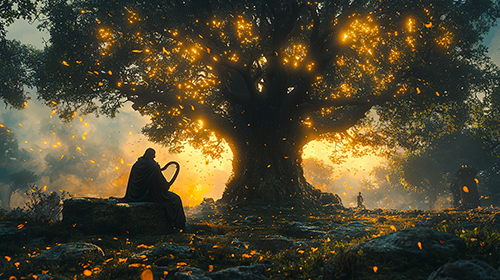 God of Magic, Wisdom, and Art
God of Magic, Wisdom, and ArtSwearing an Oath on Veles
The Tale of Bygone Years (10th–11th century) records that during solemn agreements, people swore by Perun and Volos, the god of cattle. Perun embodied power and martial honor, while Veles stood for truth deeper than mere words. This duo reflected two pillars of early Slavic society: warriors—Perun; herders and craftsmen—Veles. Breaking an oath sworn to Veles brought a curse, and the oath-breaker’s soul would not rest after death.
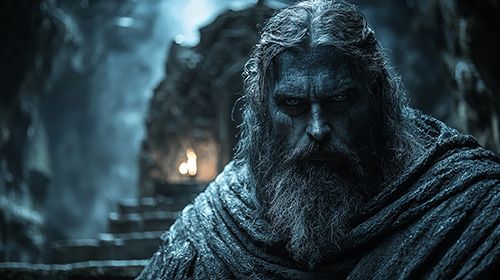 Swearing an Oath on Veles
Swearing an Oath on VelesProtector of Livestock and Prosperity
As the “god of cattle,” Veles protected everything that provided people with nourishment and wealth. Crucial in the agricultural cycle, he received sacrifices in spring for fertility and in autumn as thanks for the harvest—offerings included cow horns, wool, milk, and honey. Veles was also a guardian of boundaries: roads, bridges, and pastures. Even after Christianization, peasants continued to honor him through the cult of St. Vlasius, patron of cattle.
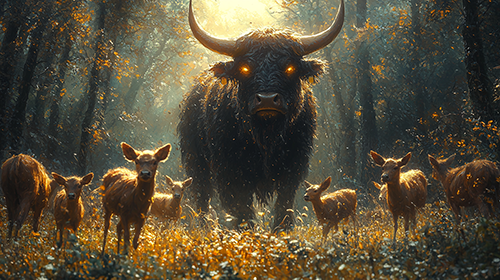 Protector of Livestock and Prosperity
Protector of Livestock and ProsperityRuler of Nav
According to Slavic belief, Nav was not a place of punishment but a shadow realm connected to life. There, Veles reigned, guarding departed souls and readying them for reincarnation. He is thus a god of transition, not an end. Memorial rituals—including leaving food at graves and pouring libations—stem from his cult. In some traditions, rainfall was called “Veles’s tears,” mourning souls not yet ready to return.
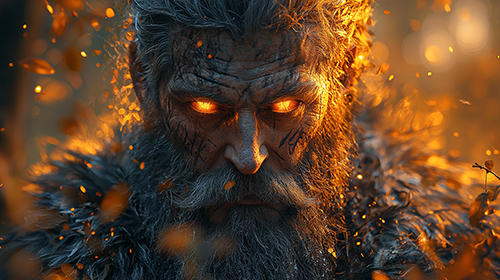 Ruler of Nav
Ruler of NavFrom Paganism to Christianity
With the arrival of Christianity, Veles’s cult survived slightly longer than most. His name was replaced by Vlasius, yet his functions remained: overseeing livestock, fertility, and protection against predators. In parts of Eastern Europe, villagers even into the 18th century continued making sacrifices to “Volosius”—a rare case of a pagan god assimilated (not destroyed) by a new faith. Veles became a shadow—but retained his essence.
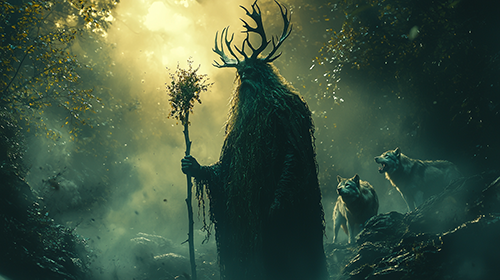 From Paganism to Christianity
From Paganism to ChristianityConclusion
Veles is far more than a god of the “lower” realms. He represents balance between external and internal forces, chaos and order, life and death. His symbols include water, bear, bull, tree, horn, and mist. He embodies change, poetry, and truth without weapons. Today, his legacy thrives in Slavic reconstructions, literature, place names, and cultural archetypes—the wise silent elder, the master of deep knowledge. Veles never disappeared—he became a depth in culture.
